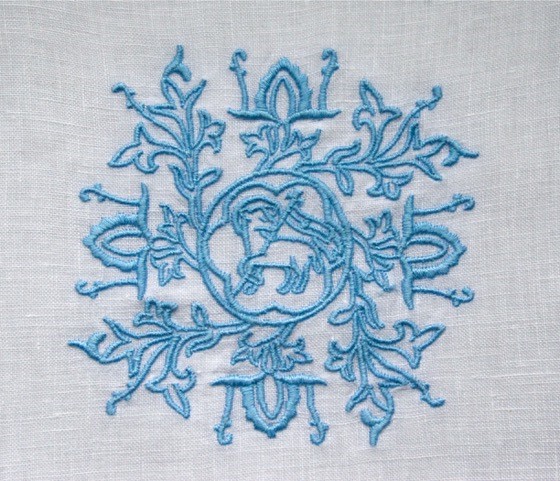Latin Mass
In the last few years there has been a resurgence in the use of the Latin Mass. Such has led to the need for information on aspects of the Latin Mass pertaining to its use of linens. The information here explains what is required and what is optional. The main requirement for the Latin Mass is that all the linens for the altar be made of pure linen, as required by the older Roman canon on the subject. There should be no Mass linens made from fabric blends or synthetics. The altar cloth itself represents Christ’s burial shroud, which was made of pure linen: “So they took the body of Jesus and bound it in linen cloths with spices, as is the burial custom of the Jews” (John 19:40).
The small linens — purificators, lavabo towels, corporals and chalice palls — are all embroidered. The thread is made from either pure silk or cotton, not rayon or polyester. The embroideries are made in the traditional white (not red) thread. The celebrant typically wears an amice for the Mass of the Tridentine Rite, and very often for the Latin version of the Novus Ordo. Amices are embroidered.
Altar Cloths
An altar for a Latin Mass is dressed with three cloths.
Altar Cloth #1:
This first cloth is of the precise length and width of the altar, and is commonly referred to as a mensa cloth. Many years ago this cloth was referred to as a cerecloth, and it was linen impregnated with wax. It was used as a barrier to prevent any leeching of minerals from the marble altar, which could damage the main linen cloth. When marble altars fell out of favor, the production of the cerecloth ended. A plain linen cloth is now used as a substitute. Mensa cloths are never embroidered.
Altar Cloth #3:
This is the top cloth, and also has the precise length and width of the altar. The purpose of this cloth is to maintain the cleanliness of the two cloths underneath. As such, the top cloth has no liturgical function, and is removed for celebration of the Mass. This cloth is never embroidered. The cost of three cloths can add up quickly. There is the option of using a plain white table cloth as a substitute for the top cloth when the budget will not accommodate all three cloths. The top cloth can then be purchased later when the funds become available.
Altar Cloth #2:
This is the main altar cloth, which is placed over the mensa cloth. This cloth always has a drop on each side. The drop is entirely at the discretion of the priest. There is no hard and fast rule on the length. But a short drop of less than 10 inches is discouraged, as it is visually unappealing. Usually, the main cloth has a drop from each end of the altar that reaches at least halfway to the floor. Main altar cloths are usually left plain, but are embroidered upon request.
A note on the Velatio Nuptialis (nuptial veil)
The use of the nuptial veil is returning for the sacrament of marriage. This veil represents the canopy of heaven. The veil is used when the priest pronounces over the couple a special blessing that comes between the canon and communion. At that time, it is held aloft by the acolytes. I suggest the use of embroidered white bridal veil fabric. Such will be easier for the acolytes to hold in place. When the practice of using the veil becomes more frequent, its composition may become standardized.



